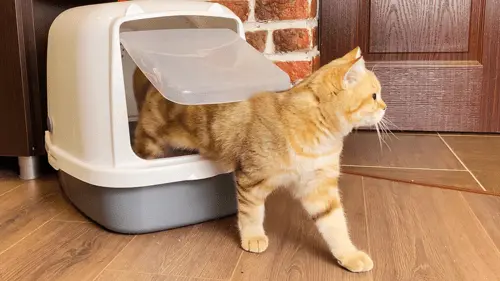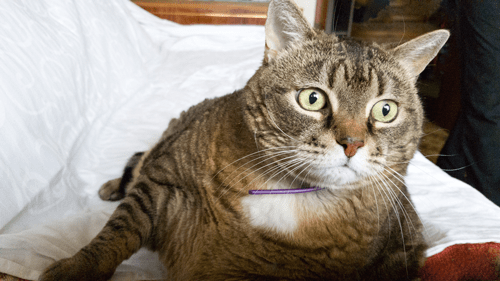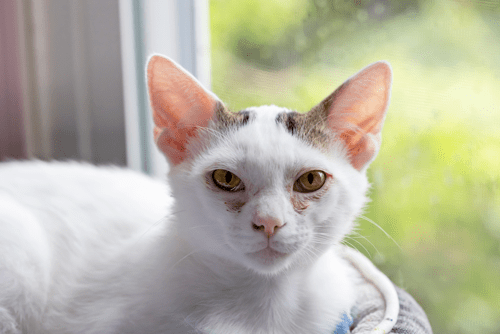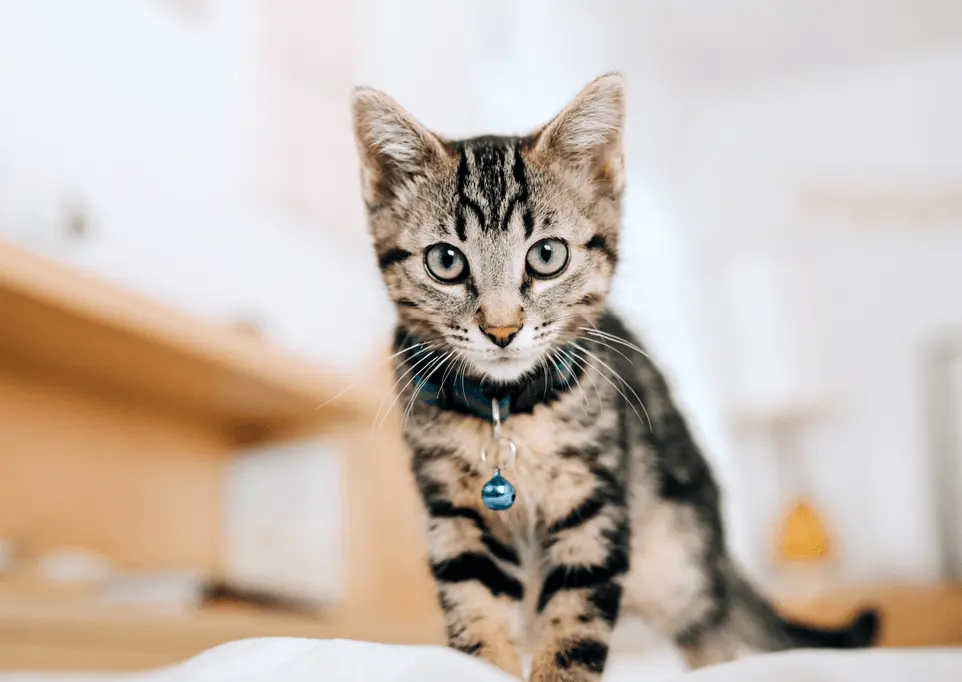Cats are affected by numerous health issues, but they are extremely good at hiding signs indicating they are sick, which can make detecting problems difficult for cat owners. Knowing what conditions are common in cats and what signs you should look for can help you determine if your cat is sick. Keep reading to learn about common diseases that could affect your cat.
Lower urinary tract disease in cats
Feline lower urinary tract disease (FLUTD) is an umbrella term used to describe various conditions that affect a cat’s urinary bladder and urethra, including bladder stones, bacterial infections, urethral plugs, anatomical defects, cancer, and feline idiopathic cystitis (i.e., a condition characterized by chronic bladder inflammation [FIC]). In severe cases, a cat’s urethra can become completely blocked, resulting in a serious veterinary emergency. FLUTD signs include:
- Difficulty urinating — You may notice your cat straining to urinate or vocalizing when they use the litter box. Frequent trips in and out of the litterbox are a warning sign as well.
- Increased urination — Urethral and bladder inflammation can cause irritation, and cause your cat to urinate more frequently.
- Blood in the urine — Infection and inflammation can cause blood to appear in the urine, in either microscopic amounts or enough to cause pink or red urine.
- Inappropriate urination — Affected cats may urinate outside their litter box if they develop a negative association because they experience pain when using the litter box.
- Behavioral changes — Some cats become aggressive or irritable, and some may become less social.
- Overgrooming — Your cat may excessively groom around their genitals because of the pain and irritation, which causes hair loss.

Diagnostics, such as blood tests, urinalysis, and X-rays, are performed to determine your cat’s underlying cause of illness, and an appropriate treatment plan is devised based on these results. FLUTD has been linked to stress, so decreasing your cat’s stress levels and providing environmental enrichment can decrease their risk.
Chronic kidney disease in cats
Chronic kidney disease (CKD) is a common problem in cats, especially senior cats, with more than a third affected. The kidneys have many important functions, including removing waste products from the blood, regulating essential minerals, conserving water, and producing urine. Cats affected by CKD persistently lose kidney function over time, because waste products and other compounds that normally functioning kidneys usually remove or regulate accumulate in the bloodstream. CKD signs do not develop until at least two-thirds of the kidney function has been affected, and typically include:
- Lethargy — Toxin buildup in the blood can cause your cat to feel bad, resulting in lethargy.
- Decreased appetite — Toxins in the blood can cause your cat to experience nausea, resulting in a decreased appetite and weight loss.
- Increased thirst and urination — Kidney damage can cause an inability to concentrate the urine, resulting in increased urination and thirst.
CKD can be diagnosed by blood tests and urinalysis, with severity of your cat’s condition determining their treatment, although fluid therapy and dietary modification are typically used to manage CKD. Wellness exams are helpful to catch CKD in the early stages when the condition is easier to manage. Cats should be evaluated at least once a year, and cats older than 7 years of age should see a veterinarian every six months.

Diabetes in cats
Cats are most commonly affected by Type II diabetes mellitus, a condition in which blood glucose levels are elevated because body cells don’t respond appropriately to insulin. Risk factors for diabetes in cats include obesity, increased age, physical inactivity, male gender, and steroid use. Obese cats are four times more likely to develop diabetes than cats who are kept at a healthy weight, so the best way to safeguard your cat is by feeding them appropriately, providing adequate exercise, and monitoring their weight. Diabetes signs in cats include weight loss despite a healthy appetite, and increased thirst and urination. Diabetes is diagnosed when persistently elevated glucose levels are detected in your cat’s blood and urine. Management involves:
- Insulin therapy — Insulin injections are given under the cat’s skin once or twice daily
- Dietary therapy — A low-carbohydrate diet is recommended to improve blood sugar regulation in diabetic cats.
- Weight loss — A cat who returns to their ideal weight may go into diabetic remission (i.e., they can maintain normal blood sugar levels without insulin injections).

Respiratory disease in cats
Cats are commonly affected by bacteria and viruses that cause upper respiratory infections. Feline herpesvirus type-1, which is also known as feline viral rhinotracheitis (FVR), and feline calicivirus are the most common viruses that cause respiratory infection in cats, while Bordetella bronchiseptica and Chlamydophila felis are the most common bacteria causing respiratory infection in cats. These pathogens are highly contagious. Cats are infected when they contact an infected cat, or they contact objects contaminated with an infected cat’s saliva, or nasal or ocular secretions. Diagnosis is typically based on signs that include sneezing, nasal congestion, eye infection, oral ulcers, and nasal discharge. The causative agent is typically not identified, but usually is due to a viral infection. As long as the symptoms are mild, most infections clear in 7 to 10 days, but antibiotics and eye medications may be necessary in severe cases. Cats affected by FVR are chronic carriers, and stress or another illness may cause signs to recur.
Many diseases affect cats but knowing the signs to look for can ensure your cat gets the care they need. If your cat needs urgent care after hours, find a convenient UrgentVet location near you. Our practices are Cat Friendly and we offer separate examination rooms for our feline friends.





